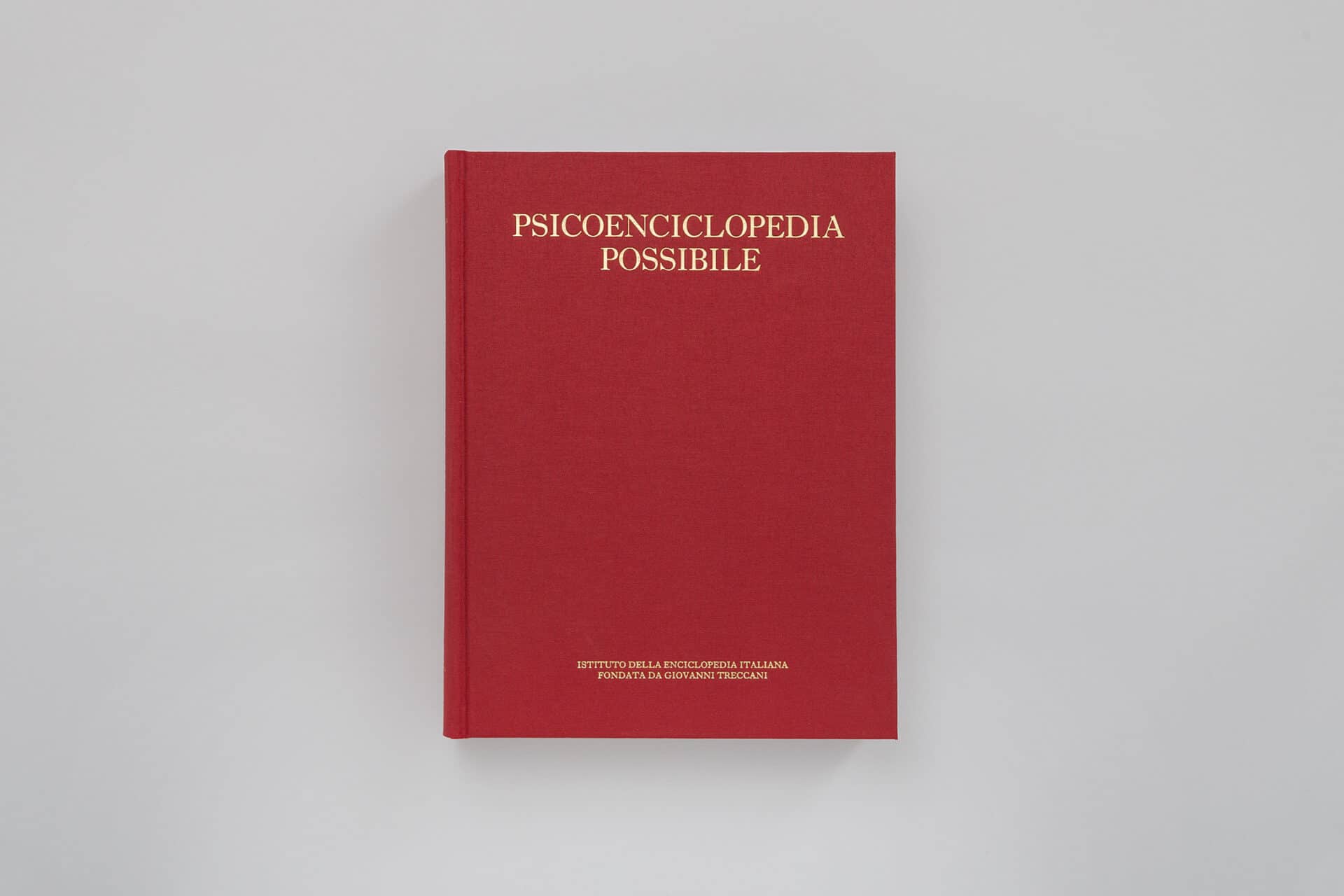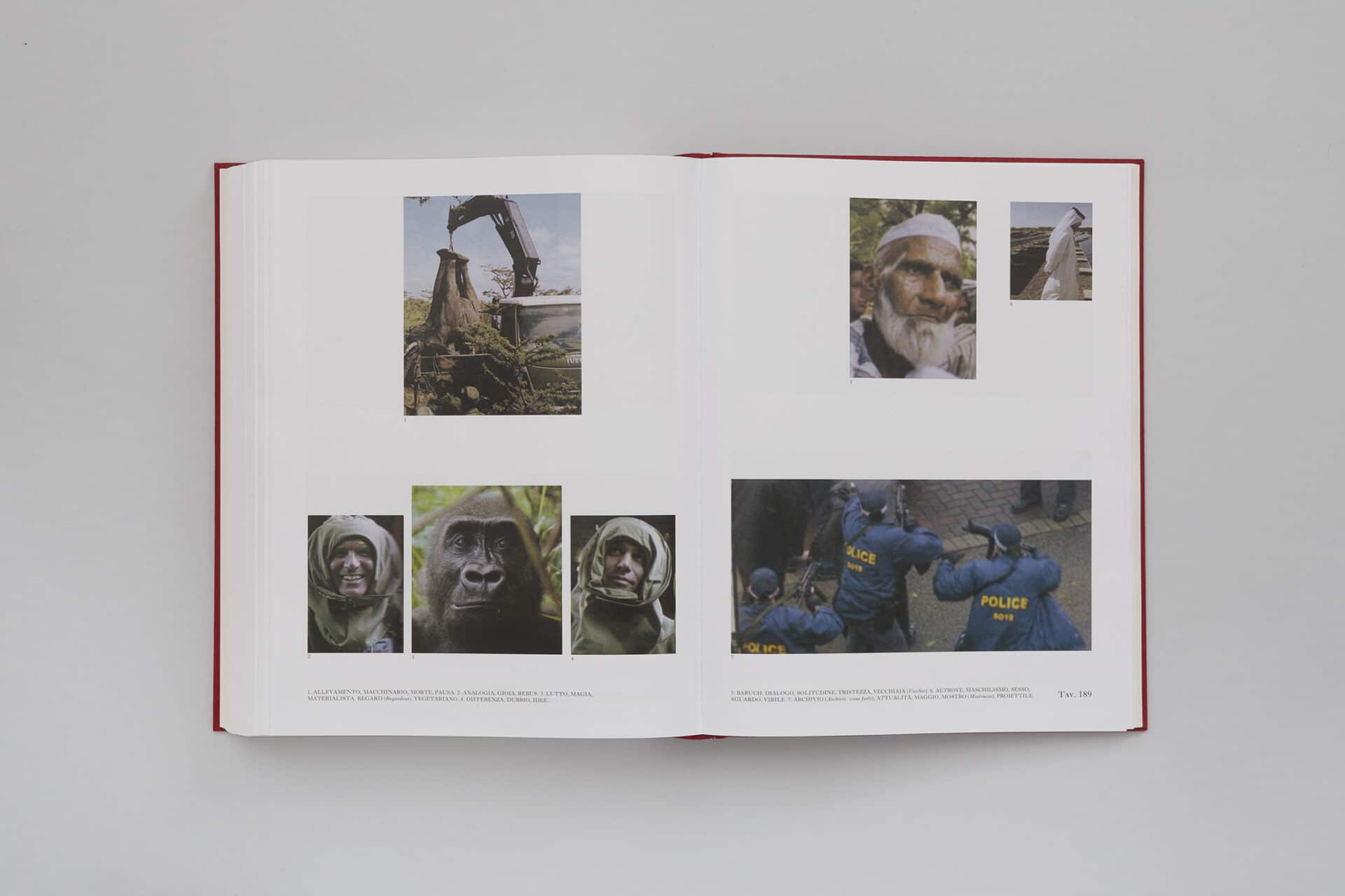Presentation of Gianfranco Baruchello’s Psicoenciclopedia Possibile
December 09, 2021

The Center for Italian Modern Art and the Fondazione Baruchello are pleased to present Gianfranco Baruchello’s Psicoenciclopedia Possibile (Possible Psychoencyclopedia) for the first time in the United States.
RSVP here.
From the late 1950s and especially from the early 1960s, Baruchello (b. 1924), a painter, writer and filmmaker, has assembled words, images or objects in a constant search for new possibilities of thought and imagination. His works include paintings, boxes/display cases and works on Plexiglas, as well as assemblage of different and sometimes recycled materials, including writing as a form of inquiry. He reduces images, words and newspaper cuttings to a state bordering on illegibility. These are aspects of his oeuvre that have made Baruchello one of the most daring and provocative experimenters of the twentieth century.

After two presentations and exhibitions in Geneva at the Centre d’Art Contemporain (September 14 – October– 17, 2021) and in Paris at the Centre Georges Pompidou (September 25 – October 24, 2021), the work will be presented at the Center for Italian Modern Art through a rich and varied one day conference to be held on December 9th. The project is produced through support from the Italian Council (VII edition, 2019), a program by the General Directorate of Contemporary Creativity at the Ministry of Culture for the international promotion of Italian art.

The 2020 edition of the volume Psicoenciclopedia Possibile comprises 250 copies and 15 artist’s proofs. The work is presented in a slipcase together with a print by the artist, which constitutes a sort of “reflection” on one of the plates, n° 128, and the book Note a margine. L’arte come esperimento del sapere (Marginal notes. Art as an experiment in knowledge) by Carla Subrizi, which describes the work’s origin and gives readers some possible keys to its exploration. 1,000 copies of a “pocket” edition of the volume are currently being printed.
During the conference, a series of drawings selected for the occasion will allow the public to delve into Baruchello’s complex system of thought, which, by the transversal nature of languages, has experimented with images, objects, installations, cinema and writing.
About GIANFRANCO BARUCHELLO (b. 1924)
After obtaining a degree in Law (1946), Gianfranco Baruchello experimented with painting by means of objects, constructing the first alphabets of motifs used as the foundation for his language. A number of objects, comprising books or newspapers, assembled and sometimes coated with white enamel, were exhibited in 1962 in Paris (Collages et objets) and New York (New Realists). His first solo show was held at La Tartaruga Gallery in Rome in 1963. In 1964, on occasion of his first exhibition at the Cordier & Ekstrom Gallery in New York, he exhibited painting and objects that already represented a significant milestone in his quest, such as fragmentation, distributing images reduced to their minimal elements on the canvas, the conceptual delocalization of space. From 1960 onwards he created short films: Molla (Spring, 1960), Il grado zero del paesaggio (The Zero Degree of Landscape, 1963), and Verifica incerta (Uncertain Verification, 1964-1965). In 1962, he met Marcel Duchamp, to whom he dedicated his book Why Duchamp (1985). During his experimentation with moving images, Baruchello worked on the idea of fragmentation and assemblage, concepts that led him, in the same period, to devise projects such as La quindicesima riga (The Fifteenth Line, 1966-1968), with lines of text taken from hundreds of books, and the volume Avventure nell’armadio di plexiglass (Adventures in the Plexiglass Cupboard, 1968). In 1968 he founded a fictitious company named Artiflex, whose mission was to “mimic industrial methods” with critical intentions. In 1973 he launched the project Agricola Cornelia S.p.A., an experiment involving art and agriculture, on which he worked for eight years. A writer and poet, he created projects for theater (Teatro alla Scala, Milan; Teatro dell’Opera, Rome) and in 1998, together with Carla Subrizi, he set up the Fondazione Baruchello. Baruchello has participated in the Venice Biennale on several occasions (1976-80, 1988-90, 1993, 2013) and documenta, Kassel (1977, 2012). He has had important retrospective exhibitions in Italy and abroad: GNAM, Rome (2011); ZKM, Karlsruhe (2014); Raven Row, London (2017); MART, Rovereto (2018). His works are housed in important international museums: the Guggenheim Museum and MoMA (New York); GNAM (Rome); the Philadelphia Museum of Art; Centre Pompidou (Paris); Deichtorhallen (Hamburg); ZKM (Karlsruhe); MAXXI (Rome); MADRE (Naples).
The Catalogue Raisonné of Baruchello’s work is currently being compiled.
RSVP here.

Conference Program:
14:00
Chair: Nicola Lucchi
Carla Subrizi – Why Baruchello Today?
Raffaele Bedarida – The Great Pilgrimage of Baruch
Franco Baldasso – Savinio and Baruchello: An Encyclopedic Conversation
Lara Demori -“Hypothalamic Brainstorming”: Le Possible sans le moindre grain d’éthique d’esthétique et de métaphysique
15:30
Panel discussion and audience questions
16:00
Coffee Break
16:30
Chair: Massimiliano Gioni
Sharon Hecker – In the Belly of the Book: Carla Subrizi’s Note a margine to Gianfranco Baruchello’s Psicoenciclopedia possibile
Bracha L. Ettinger – Give Meaning to the Eclipse of Meaning. Artworking as Anamnesis
Sarah Hamill – “Memory is an Archive:” Form, Fragmentation, and Images of Violence in Baruchello’s Psicoenciclopedia Possibile
Teresa Kittler – A Place for Everything
Maria Alicata – A System of Mixed Meanings
RSVP here.
Event in collaboration with:

The event is made possible thanks to the support of:


